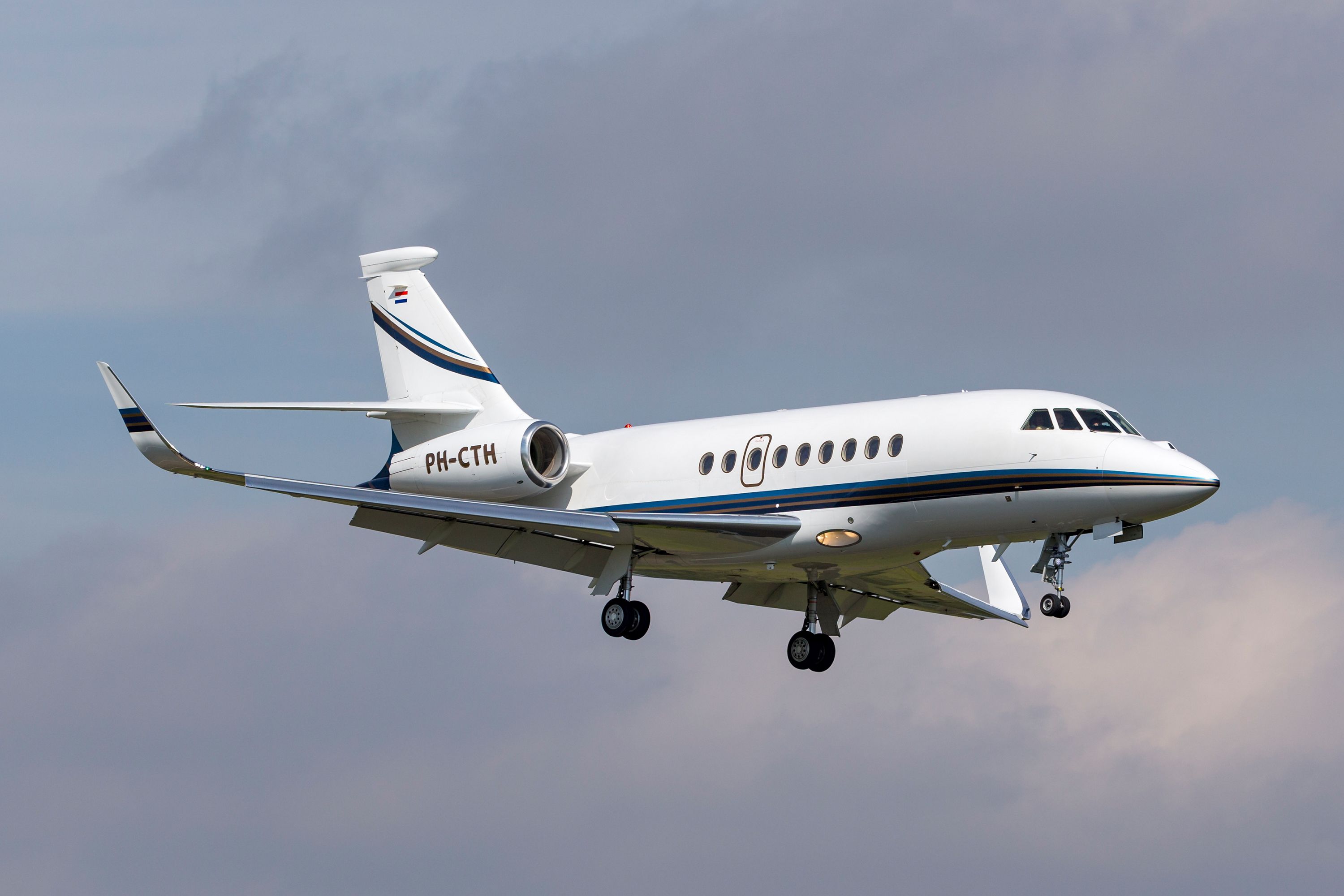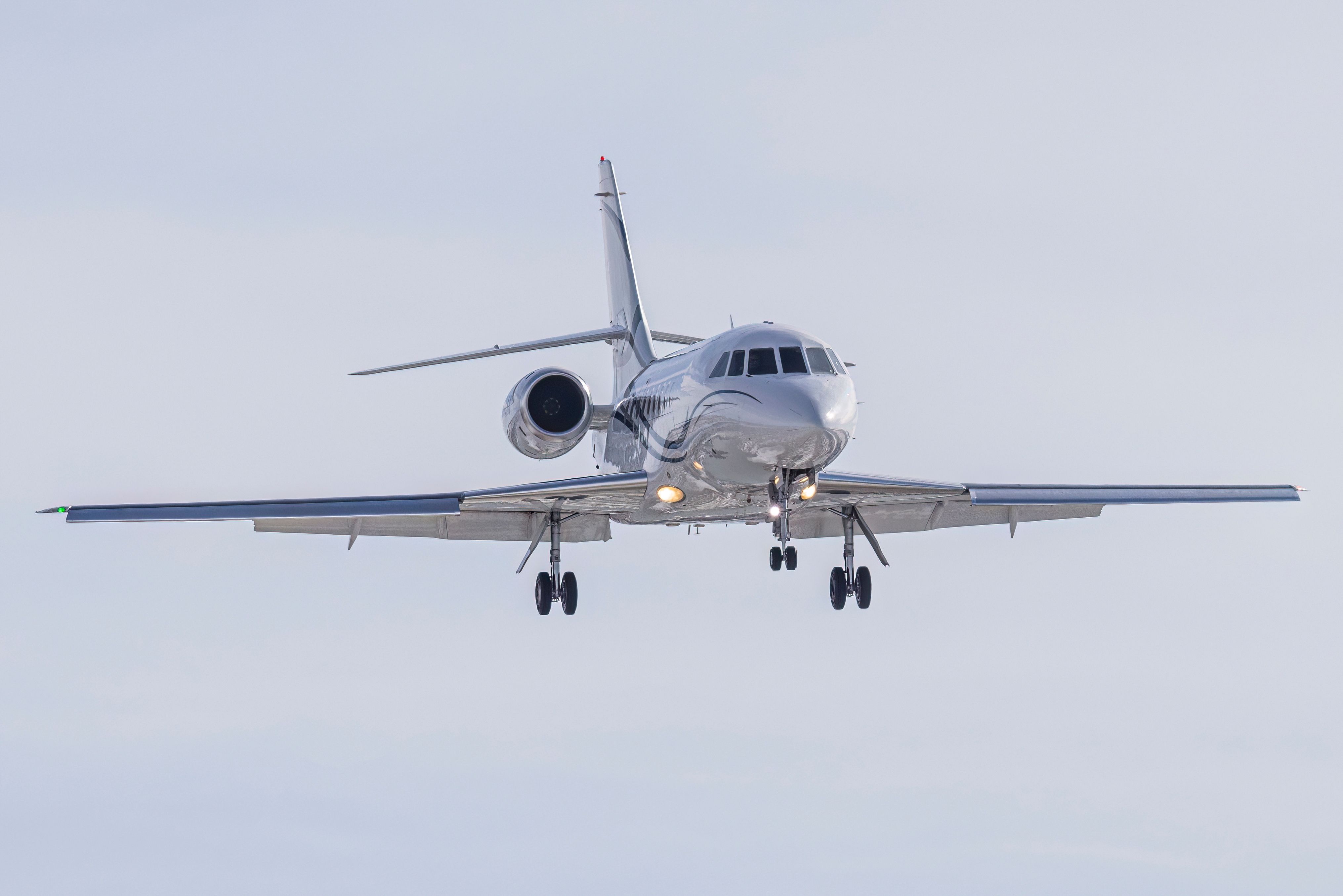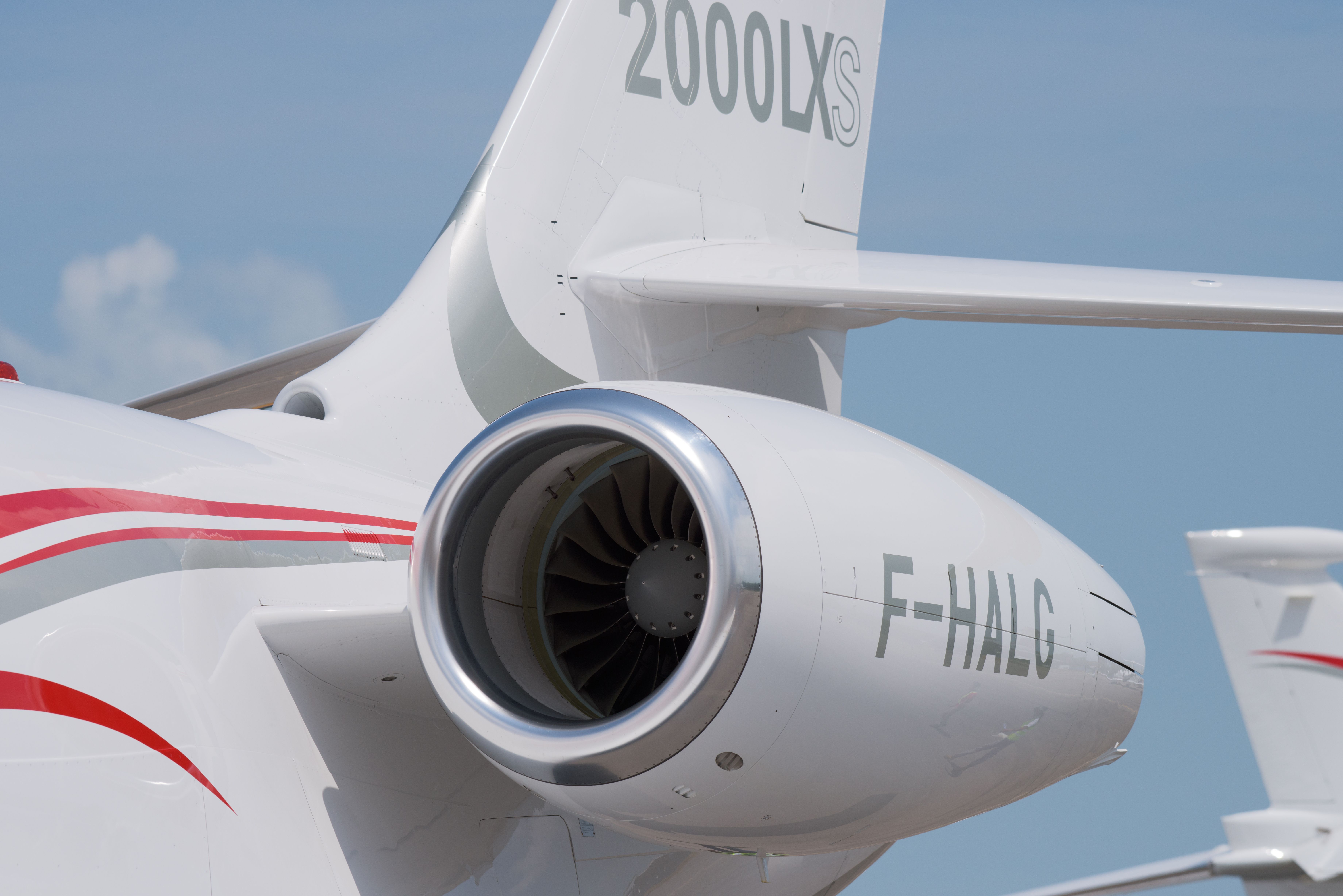The Dassault Falcon improved on the three-engine Dassault Falcon 900, developed from earlier predecessors, such as the Falcon 60 and Falcon 20. The Falcon 900 first took to the skies in 1994, while the Falcon 2000 came a year later. However, as the Falcon 2000 had some unique features, more Falcon 2000s were delivered than the Falcon 900.
Although the Falcon 2000’s fuselage and cabin volume are 7 ft (2.1 meters) and 200 cubic ft (5.66 cu m) smaller than those of the Falcon 900, the Falcon 2000 more than compensates for this with other features unique to this twinjet. But what exactly are these features? Let’s find out.
Photo: Ryan Fletcher | Shutterstock
4 Advanced avionics of the Dassault Falcon 2000
Honeywell Primus Epic-based enhanced avionics system (or EASy) suite
When the first Falcon 2000s were introduced, its cockpits were equipped with the Collins Pro Line 4 avionics suite. Later, with each successive development and variation, its avionics systems only got better. The enhanced avionics (Honeywell Primus Epic-based) of the Dassault Falcon 2000 include synthetic vision.
The Falcon 2000 was also equipped with a Collins TWR-850 Doppler weather radar and the Allied Signal GNS-XES Flight Management System. Furthermore, the Falcon 2000 also has a dual-channel Integrated Avionics Processor System.
| Characteristics | Dassault Falcon 2000 |
| Maximum Take-off weight | 16238.607kg / 35800 lb |
| Maximum Landing weight | 14968.548kg / 33000 lb |
| Engines; Power | 2; 5,918 lb of thrust each |
| Engine Model | CFE 738-1-1B |
| Service Ceiling | 14326 meters/ 47000 ft |
| Normal Cruise Speed | 459 knots (850 km/hr) |
| Maximum Speed | 475 knots (880 km/hr) |
| Maximum Range | 3130 nm/ 5797 km |
When Dassault introduced a new variant of the Falcon 2000 in 2004 called the Falcon 2000EX EASy, it featured the Honeywell Primus Epic-based EASy avionics suite.
Photo: BlueBarronPhoto | Shutterstock
3 Dassault Falcon 200 DX can land with fuel tanks nearly full
The Dassault Falcon has a fuel capacity of 16,600 lbs
The DX EASy version of the Falcon 2000 has a maximum take-off weight of 41,000 lb (18,597 kg) and a maximum landing weight of 39,300 lb (17,690 kg). Its Pratt and Whitney Canada PW308C engines, along with other features, give the aircraft a range of 3,250 nautical miles.
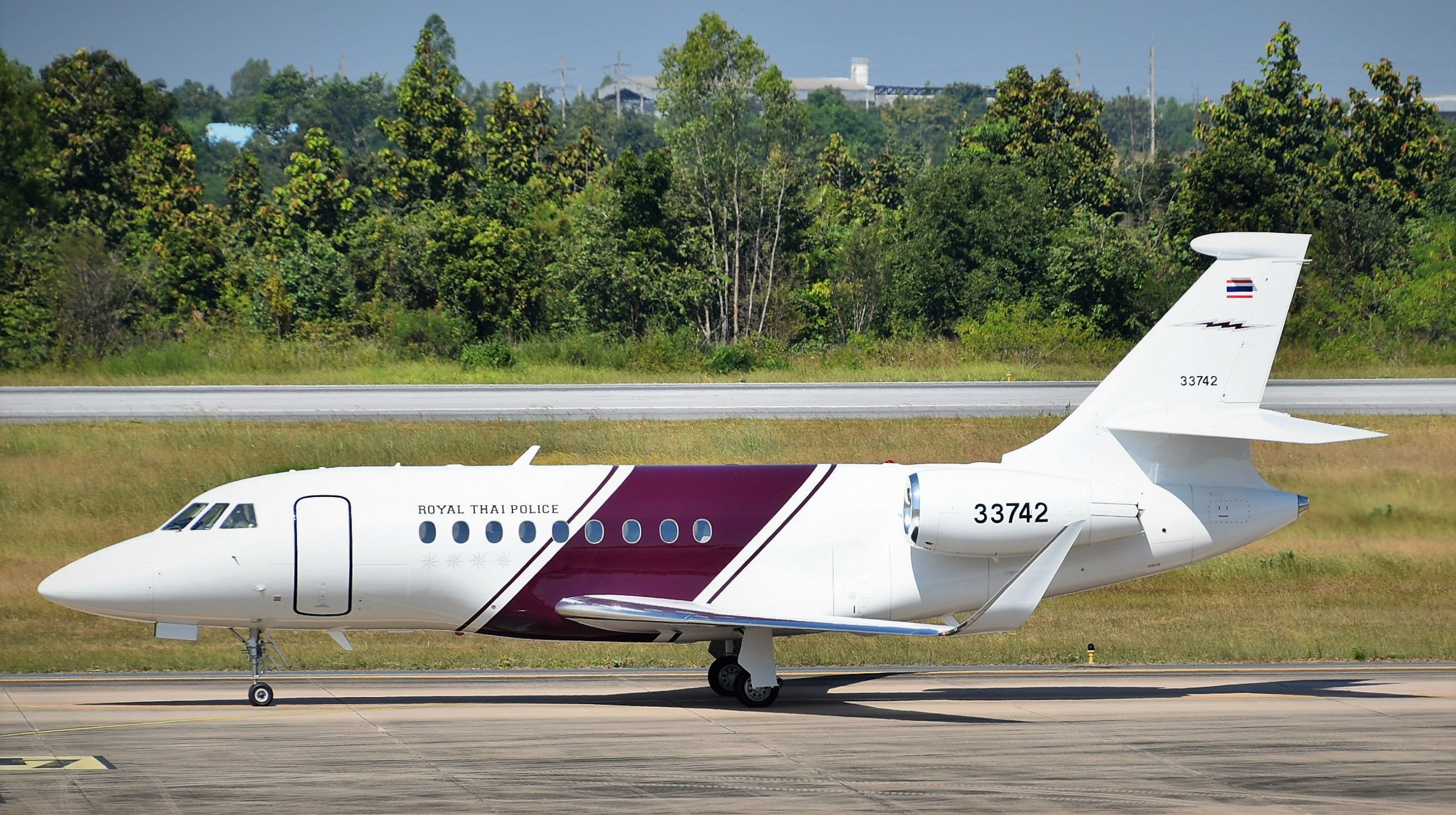
How Dassault Developed The Falcon 2000 Twinjet From The Three-Engine 900 Model
March 4th marks the 30th anniversary of the Dassault Falcon 2000’s first flight.
Dassault Aviation claims the uniqueness of one of the variants of the Falcon 200DX:
“The Falcon 2000DX offers the same spacious, quiet interior as its longer-range sibling, the 2000EX, but was developed for customers with less extensive city pair requirements. The design makes it the only business jet in its class capable of landing with fuel tanks nearly full.”
Photo: Thor Jorgen Udvang | Shutterstock
Other specifications of the Falcon 200-DX:
- Empty Weight: 20,735 lb (9,405 kg)
- Max Payload: 5,700 lb (2585 kg)
- Wing Span: 63 ft 5 in (19.32 meters)
- Max Range: 3,250 nautical miles
2 Maritime surveillance for intervention missions
Air Forces of nations like France and the Republic of Korea use a maritime version of the Falcon 2000
The Falcon 2000 has been developed into a Maritime Reconnaissance Aircraft (MRA) and a Maritime Surveillance Aircraft (MSA) for several nations, including Japan and France. These militarized versions (MRA/MSA) were based on the Falcon 2000LXS, a long-range version of the Falcon 2000.
The Falcon 2000LXS has improved takeoff and landing performance compared to the Falcon 2000. The long-range version also has superior cabin comfort and lower emissions.
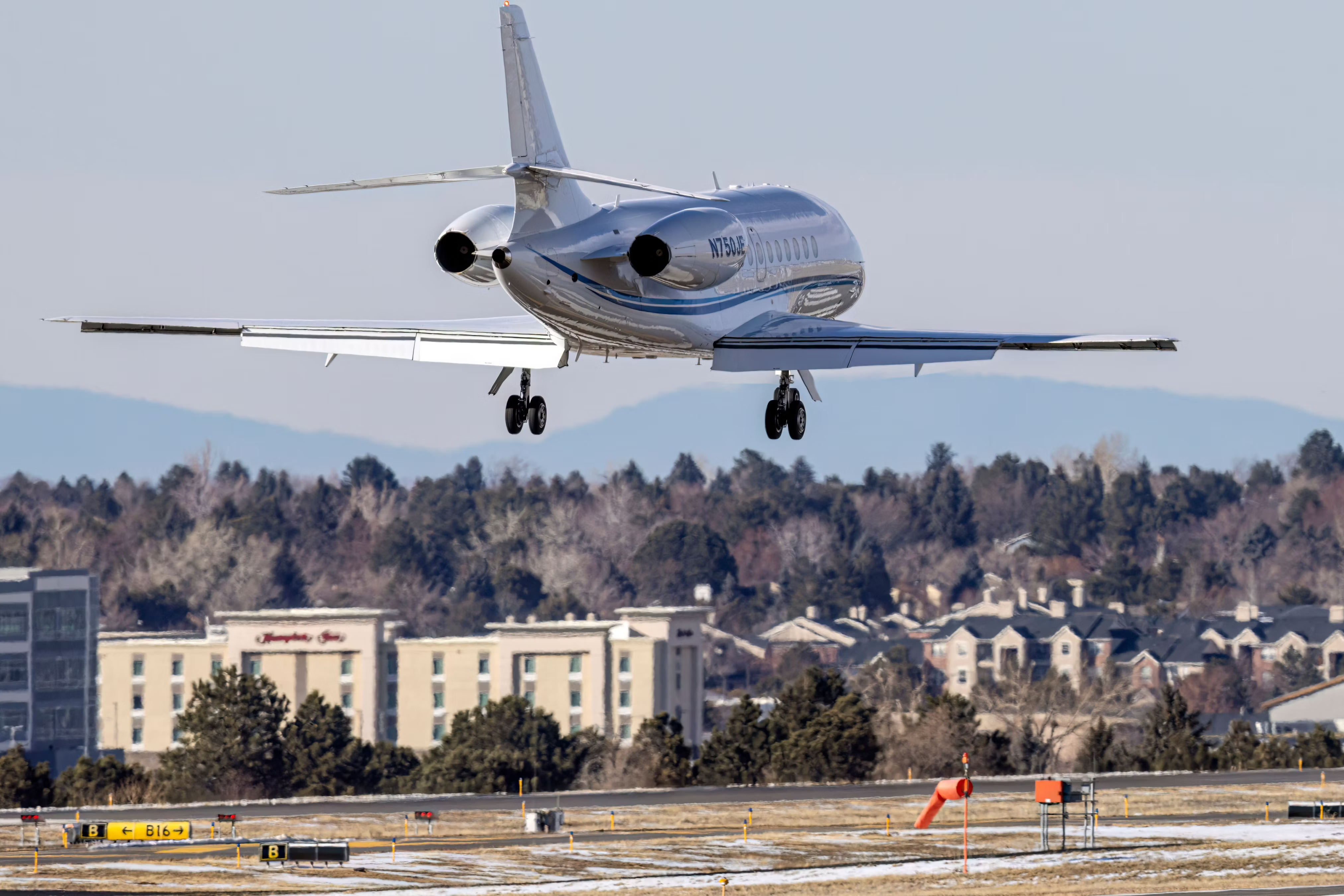
31 Years On: The Looking Back At The Dassault Falcon 2000’s 1st Flight
After flying for over 30 years, the French Falcon 2000 business jet is still going strong.
In 2015, the Japan Coast Guard ordered Six Falcon 2000MSA. After the order had been placed, the chairman and CEO of Dassault Aviation, Eric Trappier, commented:
“This acquisition comes after an international competition won by Dassault Aviation. It is a new milestone in the long standing relationship between Dassault Aviation and the Japan Coast Guard. Japan has successfully operated Falcon jets for maritime surveillance and search and rescue around the Japanese archipelago since 1989 and we are extremely honored that, once again, the Japan Coast Guard has chosen to renew its confidence in our aircraft”.
Photo: Dassault
The Falcon 2000 Albatros, an aircraft developed from the Falcon 2000 MSA, is expected to be operated by French Naval Aviation.
| Aircraft | Operating Nation | Division |
| Falcon 2000 | Republic of Korea | Republic of Korea Air Force |
| Falcon 2000EX and Falcon 2000LX | France | French Air and Space Force |
| Falcon 2000 MSA | Japan | Japan Coast Guard |
1 Blended winglets for greater efficiency
The blended winglet of the Falcon 2000 gives it a higher lift-to-drag ratio
When a variant of the Falcon 2000 called the Falcon 2000LX was introduced to the aviation community in 2009, it featured Aviation Partners’ blended winglet. This saw the aircraft’s maximum range increase to 4,000 nautical miles and fuel consumption improvements.
The blended wings of any aircraft are built such that there’s no clear demarcation between the wings and the main body. Blended winglets, on the other hand, are made such that there is no clear boundary between a wingtip device and the aircraft’s wings.
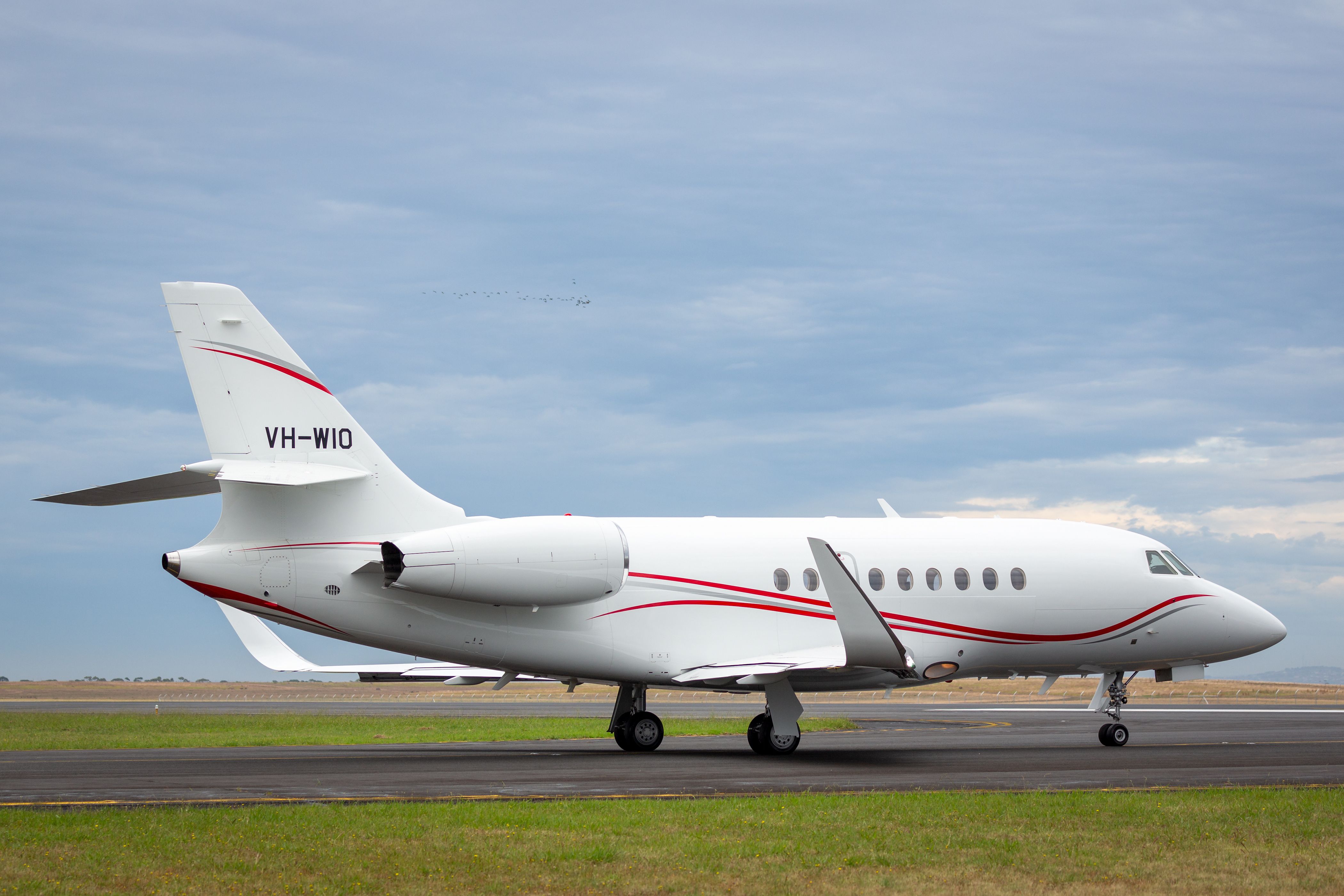
Some of the advantages of a blended winglet in a Falcon 2000 include:
- Reduced drag by minimizing wingtip vortices
- Improved fuel efficiency
- Better performances at a high speed
- Increases the effectiveness of the tailplane under the weight of the aircraft
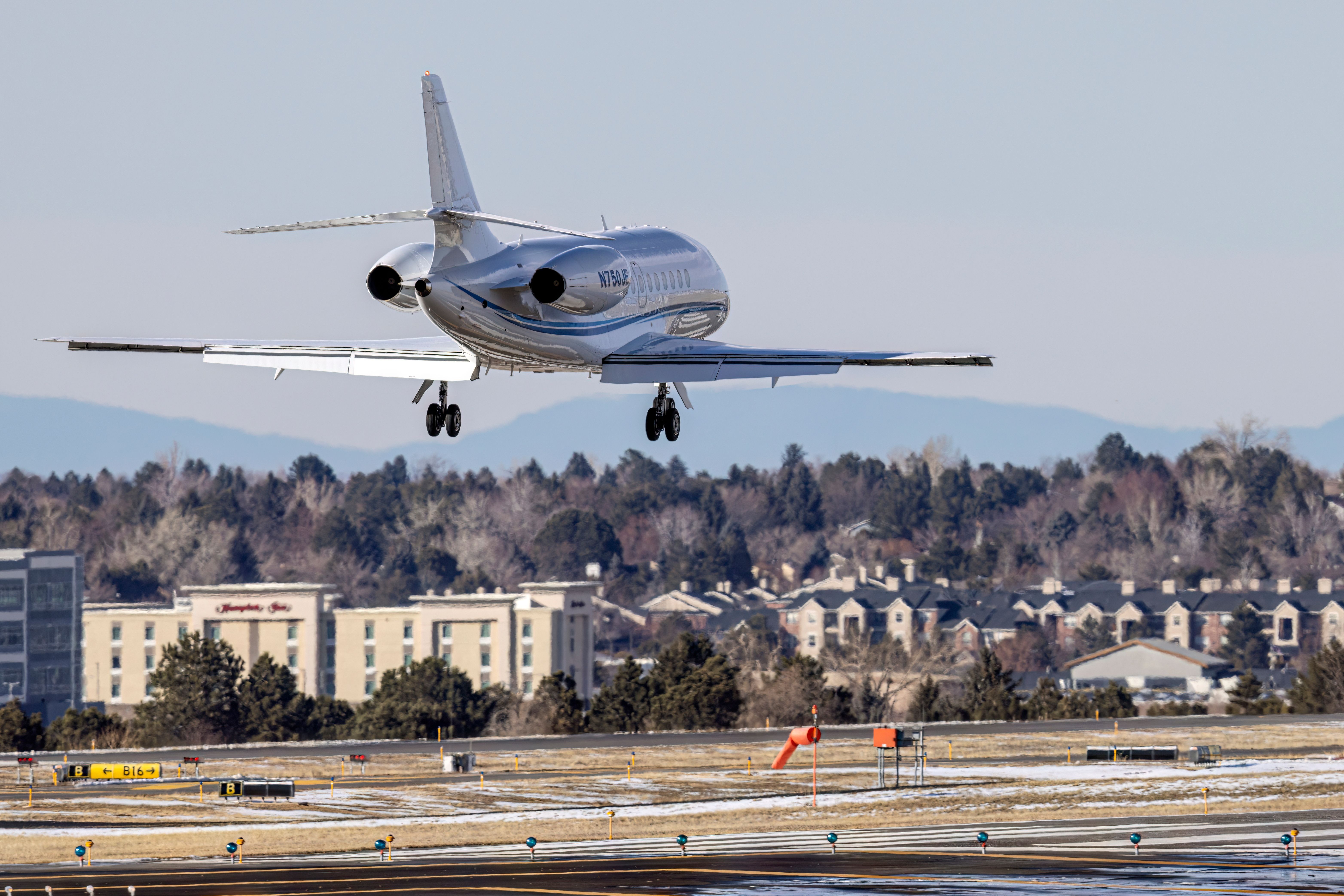
Dassault Falcon 2000: The Price Of Purchase & Ownership
Different variants are priced differently but have similar operating costs.
NASA’s Boeing 747 Shuttle Carrier Aircraft, Gulfstream III, Gulfstream IV, and Gulfstream V also use the blended winglet feature to improve performance.


